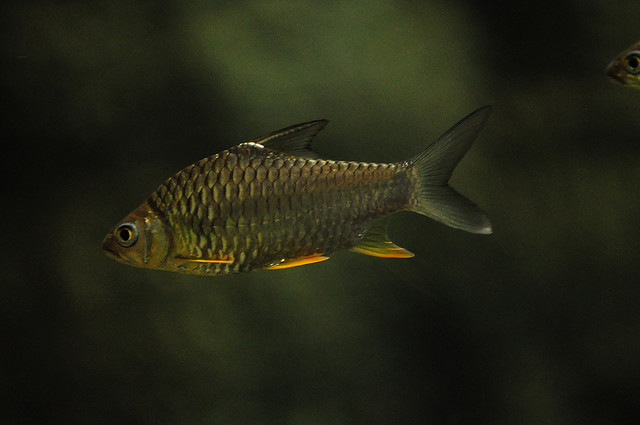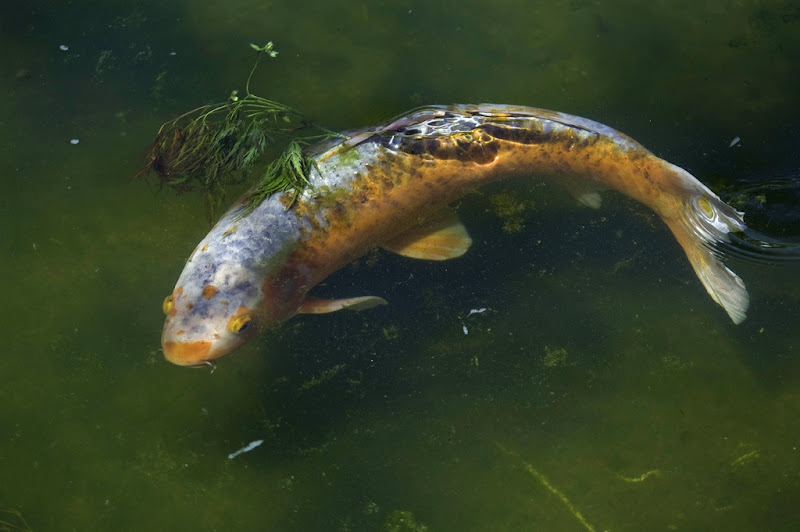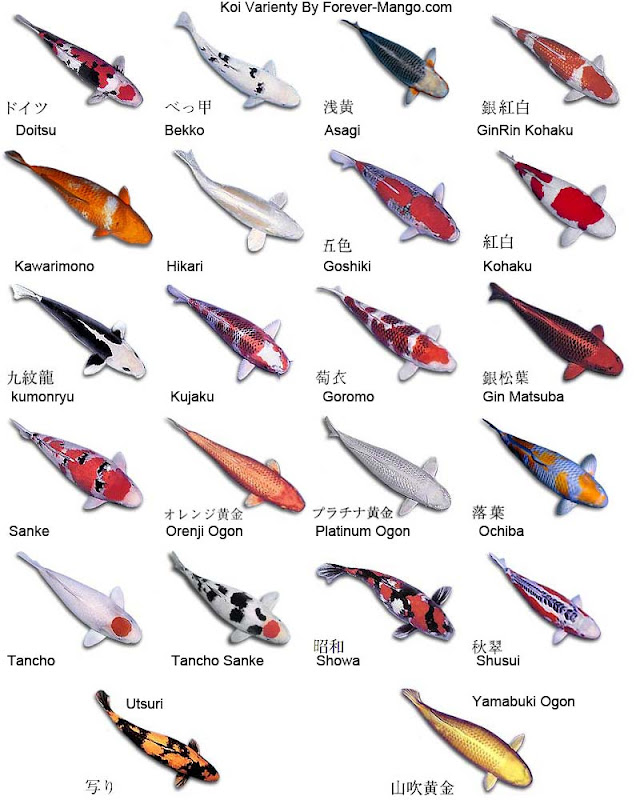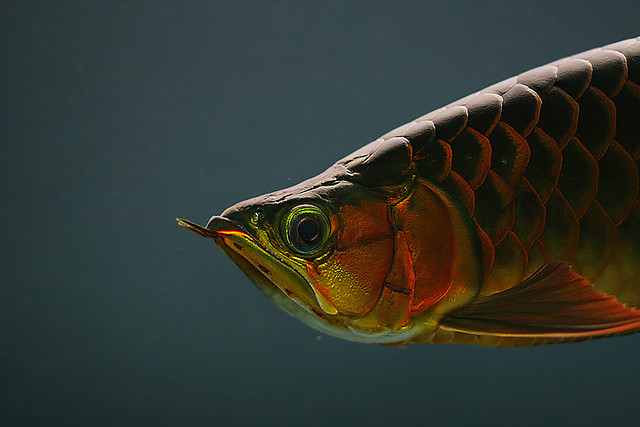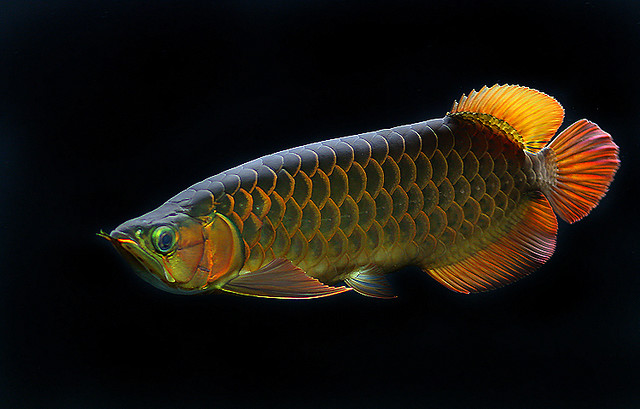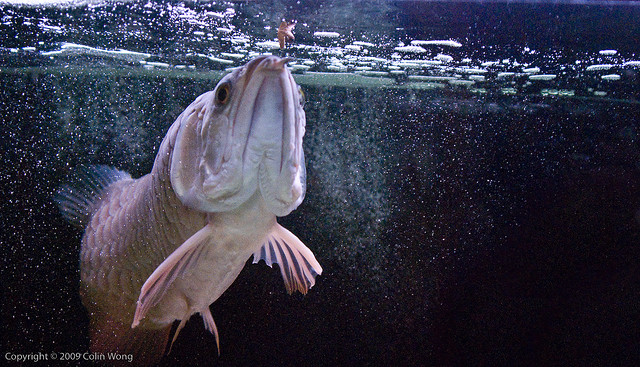
These following Tropical Fish Pictures are collection of Heckel Discus photos (Symphysodon discus 1840 ) taken by Scott Hanko at New York Aquarium. The base color of these fish is light brown to brown. Across the whole length of the body, 15 to 19 light blue horizontal and irregular striations. These striations start on the head and the cheeks and runs across the body up to the base of the caudal fin.
The Heckel discus is distinguished by the fifth prominent vertical bar (see pictures below). The eyes are gold to red. The ventral fins are red orange and they have a blue longitudinal band. These tropical discus fish come from Rio Negro (Brasil).
The Blue Face Heckel ( BFH) have the characteristics that the regular Heckel except that thy have the head in solid blue color. Some specimens have this solid condition through front half of the body. These discus fish species also come from Rio Unini and Rio Jaua (Brasil).
The Heckel Cross is a mix between a Heckel and a Blue, mainly from the Rio Madeira system. These fish have different characteristics, some best photos of discus show that this fish look like a standard blue with almost no striations in the body but with the fifth Heckel bar, other look like a Royal Blue Diamond Discus Fish with the fifth bar also.
Discus (Symphysodon spp.) like on tropical discus fish pictures below are a genus of three species of cichlid freshwater fishes native to the Amazon River basin. Discus are popular as aquarium fish and their aquaculture in several countries in Asia is a major industry. It's one of the best freshwater fish for aquarium.
 Discus fish belong to the genus Symphysodon, which currently includes three species: The common discus (Symphysodon aequifasciatus), the Heckel discus (Symphysodon discus), and a new species which has been named Symphysodon tarzoo. However, a further investigation published in August 2007 suggested that the genus held the three species: S. aequifasciatus (the green discus), S. haraldi (the blue/brown/common discus) and S. discus (the Heckel discus). Both studies suggest three species; the only disagreement is in the scientific names for each.
Discus fish belong to the genus Symphysodon, which currently includes three species: The common discus (Symphysodon aequifasciatus), the Heckel discus (Symphysodon discus), and a new species which has been named Symphysodon tarzoo. However, a further investigation published in August 2007 suggested that the genus held the three species: S. aequifasciatus (the green discus), S. haraldi (the blue/brown/common discus) and S. discus (the Heckel discus). Both studies suggest three species; the only disagreement is in the scientific names for each.Like cichlids from the genus Pterophyllum, all Symphysodon species have a laterally compressed body shape. In contrast to Pterophyllum, however, extended finnage is absent giving Symphysodon a more rounded shape. It is this body shape from which their common name, "discus", is derived. The sides of the fish are frequently patterned in shades of green, red, brown, and blue. The height and length of the grown fish are both about 20–25 cm (8–10 in).
Another characteristic of Symphysodon species is their care for the larvae. As for most cichlids, brood care is highly developed with both the parents caring for the young. Additionally, adult discus fish produce a secretion through their skin, which the larvae live off during their first few days. This behaviour has also been observed for Uaru species. However when bred in captivity the larvae will tend to live off their parents secretion for up to 2 weeks.
Find more pictures of discus fish from people who breeding discus fish and hobbyists here on Tropical Fish Pictures. All fish photos have been divided by category to make finding of this best freshwater fish for aquarium images easier.









